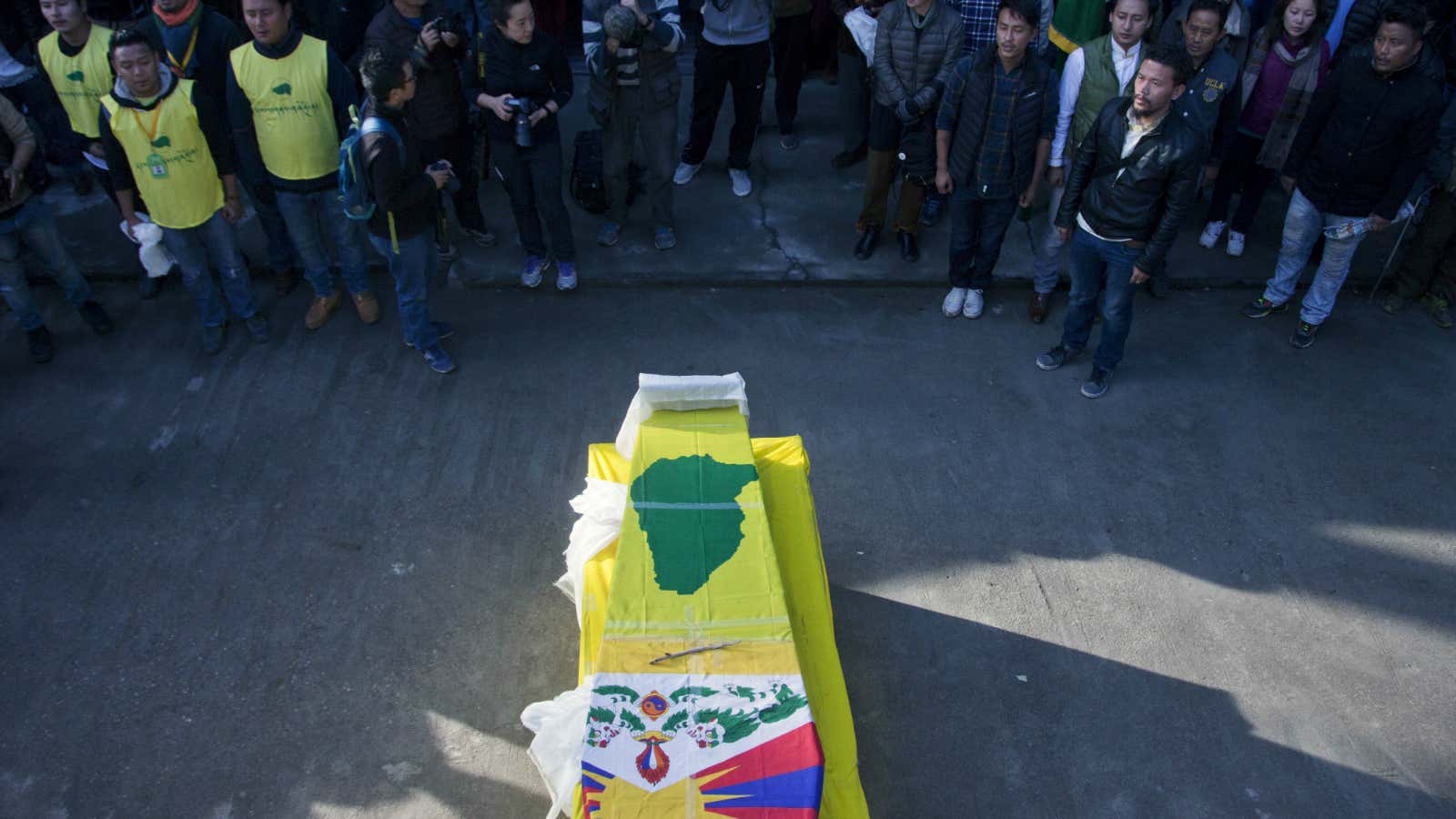Last week, as India watched student leader Kanhaiya Kumar’s momentous speech on azaadi (freedom), a 16-year-old Tibetan boy sacrificed his life to bring attention to his homeland’s plight.
On Feb. 29, shouting “Free Tibet”, Dorjee Tsering set himself afire in Dehradun, the capital of the northern Indian state of Uttarakhand. Tsering had come visiting his grandparents who stayed 35 kilometres from Mussoorie’s Tibetan Children’s Village school where he studied. He died at New Delhi’s Safdarjung Hospital on March 3 after sustaining 95% burns.
Born in India, Tsering had never seen Tibet. But growing up in a close-knit Tibetan community, he had a clear understanding of the plight of his people.
“Even the youngest of children know about the crisis in Tibet, even if they have lived in India all their life. They know Tibet is not free, and it has no rights. They chant ‘azaadi chaiye’ (we want freedom) on the streets, and everywhere,” Samten Dolma, Tsering’s elder sister, told Quartz. “All kids say that but my brother sacrificed his body for the nation.”
In a video shot from his hospital bed before he died, Tsering explained his decision through an oxygen mask:
I have had a strong determination to do something for Tibet since childhood. So, I thought there was nothing else I could do other than self-immolation. Because if there is self-immolation, people get shocked… When they are shocked, countries like the United Kingdom, America and Africa begin to pay attention to Tibetans. When they pay attention, then they will support Tibetans. That will be helpful for us. It seems the oil put on my body was not enough for it to burn completely.
Tsering’s parents sell sweaters in Manali, a tourist town in the hill state of Himachal Pradesh. He was the youngest of their five children. ”We are not into anything like politics. We come from a very simple family,” Dolma said. But the “self-determination” to do something for Tibet had been brewing within Tsering for many years.
“India is our second mother. But you are here. Or you are there. You are still a Tibetan,” Dolma said.
For decades, Tibetans have protested Chinese rule in Tibet, which Beijing claims as part of its sovereign territory. The Central Tibetan Administration, or the Tibetan government-in-exile—based in Dharamsala, Himachal Pradesh—claims that the Chinese are occupying their land unlawfully. Their Dharamsala base was established after the Dalai Lama, Tibet’s spiritual leader, fled to India following a revolt in March 1959.
Since 2009, some 143 Tibetans have self-immolated—five of these in India—to protest China’s control of their homeland, according to the Central Tibetan Administration data. Of these, 118 were men and 25 women. As many as 124 of them died.
In March 2012, 27-year-old Jampa Yeshe set himself ablaze in New Delhi while protesting against the then Chinese president Hu Jintao’s visit to India.
Lobsang Yangzom, a Tibetan student in New Delhi, said, ”Tsering decided to burn himself to bring the much-needed attention to the Tibetan cause. We appreciate his courage. But we don’t encourage other young Tibetans to self-immolate.”
Yangzom was among the 15 Tibetan students from JNU who visited Tsering and his bereaved family at New Delhi’s Safdarjung hospital. They first got to know about the self-immolation through Facebook. She took a khata, a traditional white scarf, for his parents. The scarf is a symbol of compassion in Buddhism.
On March 6, Tsering’s last rites were performed at Dharamsala.
Before dying, Tsering explained that he felt sorry for his parents, but he did not regret what he had done. ”Tibet must get freedom as soon as possible and long live his holiness,” he said. “Victory for Tibet.”
